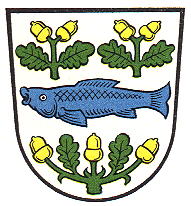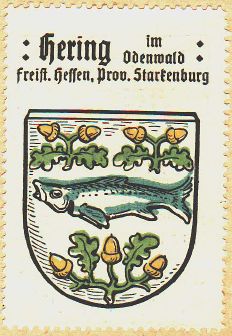Hering: Difference between revisions
Jump to navigation
Jump to search
Knorrepoes (talk | contribs) m (Text replacement - "'''↵| ↵|-↵|'''English''' ↵| {{blazon wanted}}↵|}" to "''' | blazon wanted |- |'''English''' | blazon wanted |}") |
Knorrepoes (talk | contribs) m (Text replacement - "{{media}}" to " {{de1}} {{media1}}") |
||
| Line 28: | Line 28: | ||
[[Civic Heraldry Literature - Germany|'''Literature''']]: Stadler, 1964-1971, 8 volumes. | [[Civic Heraldry Literature - Germany|'''Literature''']]: Stadler, 1964-1971, 8 volumes. | ||
{{ | |||
{{de1}} | |||
{{media1}} | |||
[[Category:German Municipalities H]] | [[Category:German Municipalities H]] | ||
Revision as of 11:08, 26 December 2022
This page is part of the German heraldry portal Deutsche Wappensammlung |
Heraldry of the World |
|
German heraldry:
|
Selected collector's items from Germany:
|
HERING
State : Hessen
District (Kreis) : Darmstadt-Dieburg (until 1976 Dieburg)
Incorporated into : 1971 Otzberg
| German | blazon wanted |
| English | blazon wanted |
Origin/meaning
The arms first appeared in the 19th century. The herring is a canting element for the town. The three oak branches symbolise the fact that the town historically was aprt of the Imperial forest of Dreieich (which means three-oaks).
| The arms by Hupp in the Kaffee Hag albums +/- 1925 |
Literature: Stadler, 1964-1971, 8 volumes.



